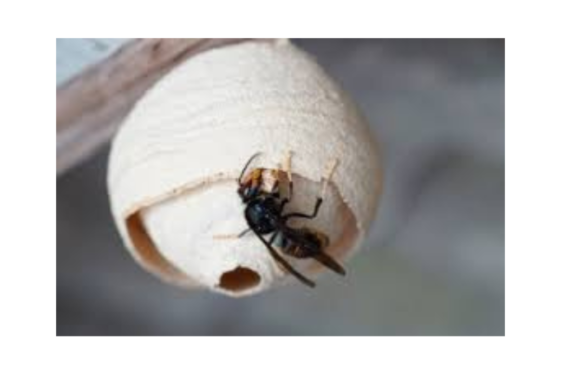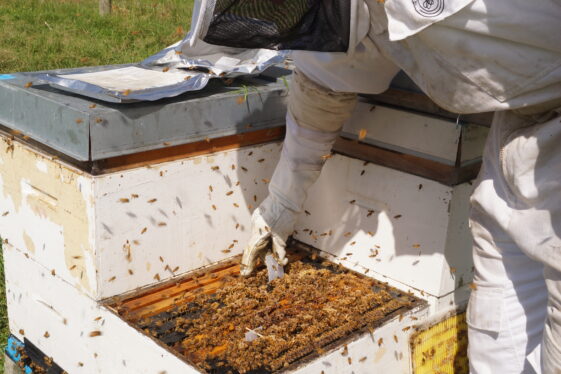Not Minding Their Own Beeswax
It was anything but a case of ‘mind your own beeswax’ at the New Zealand Beeswax Free Open Day on June 19 in Hamilton, as around 50 beekeepers listened in to experts on a range of practical beekeeping applications, and shared their own experiences.
The beekeeping supply company hosted a morning of informative discussion, which included international experts on varroa control beaming in via video, plus updates from closer to home, and a free lunch where apiarists could rub shoulders at the Distinction Hotel.
The Latest Varroa Control from Veto Pharma
The open day began with Apivar global distributor Veto Pharma updating their research and development work through Remi Pade, their leader in bee research, presenting via video-link from France. Pade detailed how 100 new compounds have been tested by their company in the last five years in the search for better varroa control, and how they keep “mite concentrator hives”, with around 50-100 mites per 300 bees, for research purposes.
Pade detailed a new product which has gained registration in America, but might be some time off arriving in New Zealand. ‘Amiflex’, like Apivar, has amitraz as the active ingredient, but is applied in a gel formation, to the top bars of the hive. It shapes as a potential winter treatment, with Pade saying it cannot be used when supers are present due to risk of residues entering honey and wax. Trials have shown it to be 99% effective when applied to broodless colonies.
The Frenchman also tipped some promising research taking place into a new organic compound that is proving, thus far, to be twice as effective at killing varroa as oxalic acid, with low bee mortality. So, what is it? That’s a trade secret, but it has serious potential they believe.
However, Pade tempered expectations by explaining that it usually takes eight to 12 years from selecting a candidate compound to use as a varroa treatment, to getting it to market. “There is stuff coming, but don’t expect it this year or next, or potentially not in the next five years,” explained NZ Beeswax general manager Nick Taylor.
Formic Professional
From France the video link moved to Canada, where NOD Apiary Products scientist Heather Broccard-Bell informed the audience about their Formic Pro product and associated research they are undertaking.
While they are not certain of the precise mode of action which formic acid uses to kill varroa mites, there is strong evidence that it interferes with the ability of mites’ cells to produce the energy they need, Broccard-Bell believes. “It’s quite unlikely that organisms will be able to evolve resistance to it,” she reassured.
Formic acid is also not lipophilic, meaning it does not stick to fat. With beeswax being a form of fat, that means no residues.
While formic acid might seem a potent product to beekeepers (and safe handling of any form of formic acid was stressed), the scientist explained that it is far more potent to varroa mites than bees.
“That’s how all medicines work. Take too much of anything and it will be toxic.”
Taylor said Formic Pro sales in New Zealand have approximately doubled every year for the past four years.
Another project which Broccard-Bell has undertaken is to what level drones act as a “reservoir” or “buffer” to catch viruses before worker bees fall susceptible. Preliminary results show more drone brood in a hive has resulted in reduced viral loading in workers.
Foster Method in Detail
While dnature diagnostic and research’s Foster Method of beehive swabbing and qPCR testing for American foulbrood (AFB) has been on the market for several years, technical director John Mackay took some time to detail its effectiveness.
“This is not a replacement for visual inspections. It is just another tool in the toolbox,” Mackay explained.
“The vast majority of hives have no spores whatsoever,” he pointed out, in response to recent public claims that the method could be used to find AFB in any hives or used equipment. People who claimed that were either misinformed or “what’s the word?… oh yes, lying”.
Mackay presented various case studies where the Foster Method was used to swab either hives in the field, or equipment not in use, to greatly reduce AFB incidence. In one case a large mānuka honey company was able to reduce AFB spore counts from 23 tonnes of honey down to just one tonne the following season by using the Foster Method to cull any spore-infected dead-out hiveware, and some live hives.
Project Clean Hive, undertaken in Otago and Southland 2018-21, was also referenced by Mackay as being instrumental in the development of their new qPCR method. When one beekeeper involved in the project had a major outbreak of AFB following purchase of hives, they soon turned to swabbing the entrances of all hives. Any hives that returned a positive result were burned and the business’s infection level was returned to industry standard within eight months, Mackay said.
Using the method in cases of outbreaks like that is its best use Mackay explained saying “this is a backstop, it’s not a frontline, ‘whose hive can we swab next’ tool”. A big part of dnature’s service is helping beekeepers interpret test results, especially when composite tests are usually carried out in the first instance.
Spore counts of 18,000 on any hive or equipment is the threshold for a sure-to-come clinical infection, Mackay explained. “At 18,000, if it’s not clinical now, it will be in the coming weeks.” Several beekeepers at the event espoused the value of the Foster Method, including John Berry, who called it “a wonderful system”.
Midlands Findings
While Midlands research apiarist Martin Laas might not have been present to present some of their findings around varroa management, Taylor did so on his behalf.
Titbits which Laas had noted in the presentation included the advice ‘if you are not looking, you are guessing’ when it comes to the value of mite washes, and pre and post treatment is the key time to monitor; beekeepers should fully understand the pros and cons of the various varroa treatments available, and the best time to use them; all treatments suffer from the same challenge – if you start with high mite counts, it’s hard to win.
Taylor summed up the ability of varroa mites to hide on the bodies of honey bees, saying “they have evolved to be a tiny, little, hidden leach and the only way to find them at any accurate level is an alcohol wash or similar”.
Original Publication: Apiarist’s Advocate – July 2024





